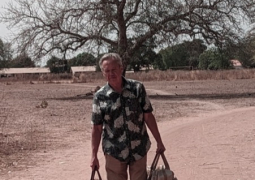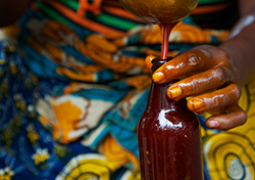
Mary the Mother of Jesus cuts a special place in the New Testament and, in fact, through the Redemption story in the entire Bible. It is she, the young virgin, who obeys without question, “Be it done unto me according to thy word,” when God asks her. Through obedience she earns her right to the Magnificat in which she chants her readiness to go forward with God’s bidding: “For behold, from henceforth: all generations shall call me blessed. For he that is mighty hath magnified me: and holy is his Name.”
That young woman takes up motherhood with a commitment; a mother constantly behind her son, growing him up strongly in character and behaviour; putting him to helping his step-father Joseph with chisel, saw, and plain in his workshop. She is there to launch the mission of her son at the Canaan wedding feast. She is there on the Way to the Cross where she comes face-to-face with her suffering son. The sword, that of which the Prophet Simeon spoke, is piercing through the tender soul of the woman.
In the course of that service as Mary the Mother, she becomes Mary the Disciple. And, at the vigil to close her son’s short sojourn of 33 years on this earth, she wins his dutiful attention, the son who, with his last breath, makes final arrangements for her security and comfort when he calls out: ‘Woman, behold your son; son behold your mother.’
What a reassuring and responsible statement in favour of a person who is being dressed in the role and robes of a matriarch and Mother-in-Grace, above and beyond being the physical mother of Jesus, but now over the extended family, hers and the millions in the world today that her son is in the process of redeeming into one family. Therefore, with the generic label of ‘Woman,’ Mary takes on an image translating beyond just a mother to the symbol personifying Womanhood in the more universal sense. She becomes the New Eve, the untainted conduit in the redemption prophecy after the downfall of the First Eve.
The pronouncement by the dying Christ accentuates that love and care for his mother and that respect for John as a worthy custodian and careful trustee of the welfare of such a precious woman. This is the social security guarantee for a doting mother whose loving closeness and constant concern for her son prompts Jesus in many places to remind her nonetheless of the central mission as in Cana, ‘Why are you pushing me? My time is not yet’; in Jerusalem, ‘Know you not that I must be on my father’s business’, again in another setting, ‘Who is my mother and who are my brothers?’ and here ordains his disciples and us, the New Church: behold my mothers and my brothers.
Interpreters sometimes misunderstand these responses to be cheeky, brash, but which are only meant to teach us to balance the emotions inherent in motherly, fatherly, and brotherly or possessive passions in order to see beyond to the pre-eminence of the God who chooses Mary in the first place for the role of the Mother of His begotten Son. That is the same reason he says to a grieving son, ‘Let the dead bury their dead.’ Jesus is the missionary who preaches that worldly distractions must not disturb Mission.
In short, not even the best we have in possessions and desires must stand in the way of our service to God. Rather, our duty to family must be designed around and as part of our worship of God. Nevertheless, with these last words to his mother, Mary, and to his disciple, John, Jesus underlines the due respect, regard, and duty that must be there as entrenched in the 5th of the 10 Commandments, the only Law of Moses that carries a promise: That thy days may be long in the land which the Lord giveth thee,’ being consequent upon honouring our fathers and our mothers.
John, a trusted disciple, is given that task to take care of Mary as much as he would be able to. John’s acceptance was a reassuring attention to duty and detail that children take full responsibility for their parents and aging fellows for food, clothing, housing, and medical concerns.
Thus, become we children of Mary through Jesus and now, through John, we are weaned into the brotherhood of discipleship. We see Mary now, not as that ordinary woman in Nazareth town, but one to be venerated as the Blessed Virgin Mary. Through her prayers of intercession we too can reach Jesus just as she offers on behalf of the hosts and guests at the wedding in Cana, who reach him through her to discover what rich wine there is to be drawn from our ordinary waters.
By her we can learn to honour and protect womanhood, provide for the family, hold our womenfolk in love and respect, stop sex discrimination, end religious and social gender-based violence, stop female genital mutilation, eliminate maternal deaths, and educate our women.
There are many things we can bring to prayer and action for women, centring our thoughts on the woman whose ready obedience to duty brought us IesusHominumSalvator—Jesus, Saviour of the World. We must make our homes Nazareth homes because we know from the evidence that that was a good home with the nurturing environment in which to live in love and grace. This should remind us constantly of our responsibility as keepers of our children, our parents, and of one another according to this profound bidding of God: ‘Woman, behold your son; Son, behold your mother.’ Amen.





